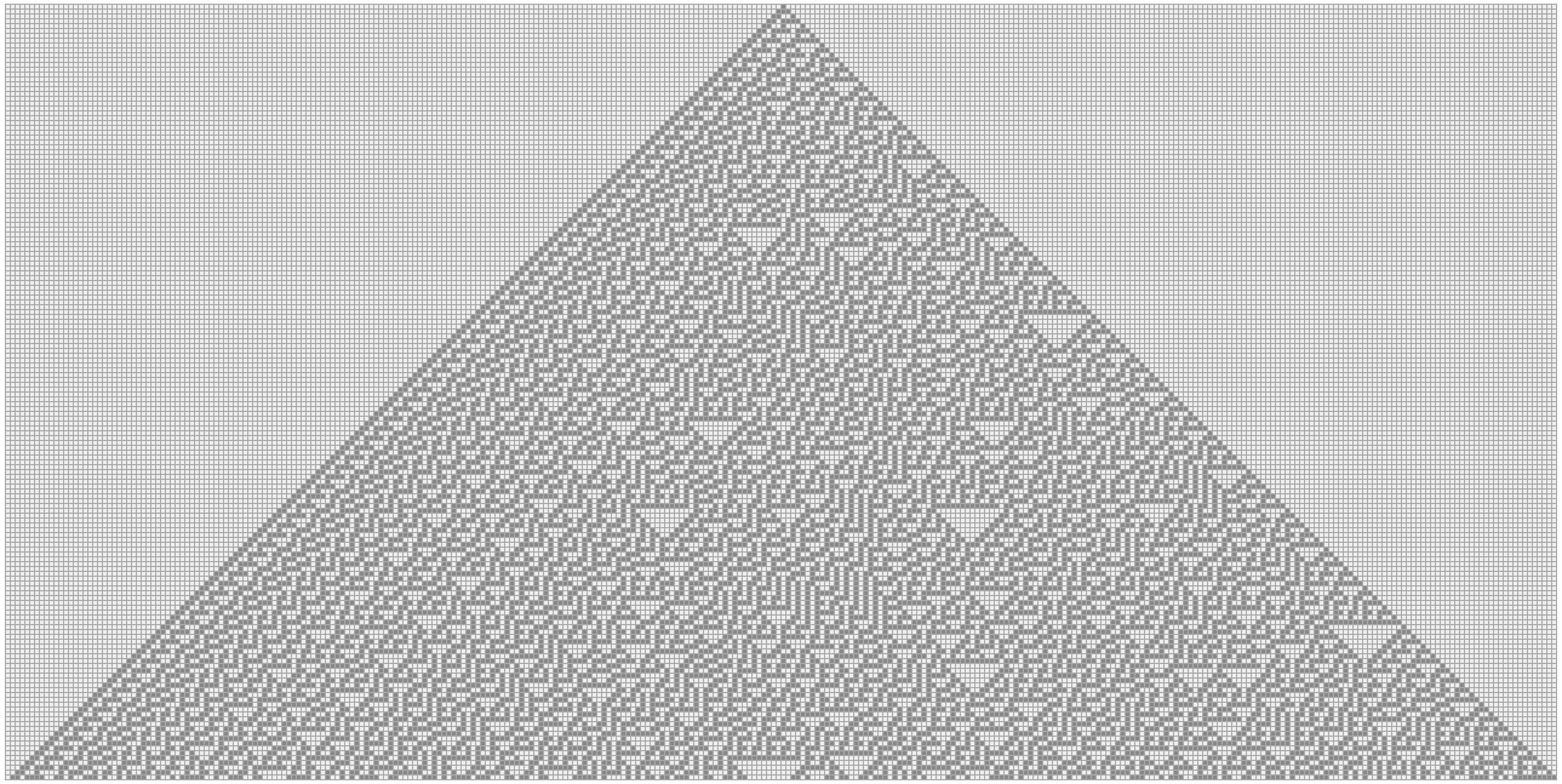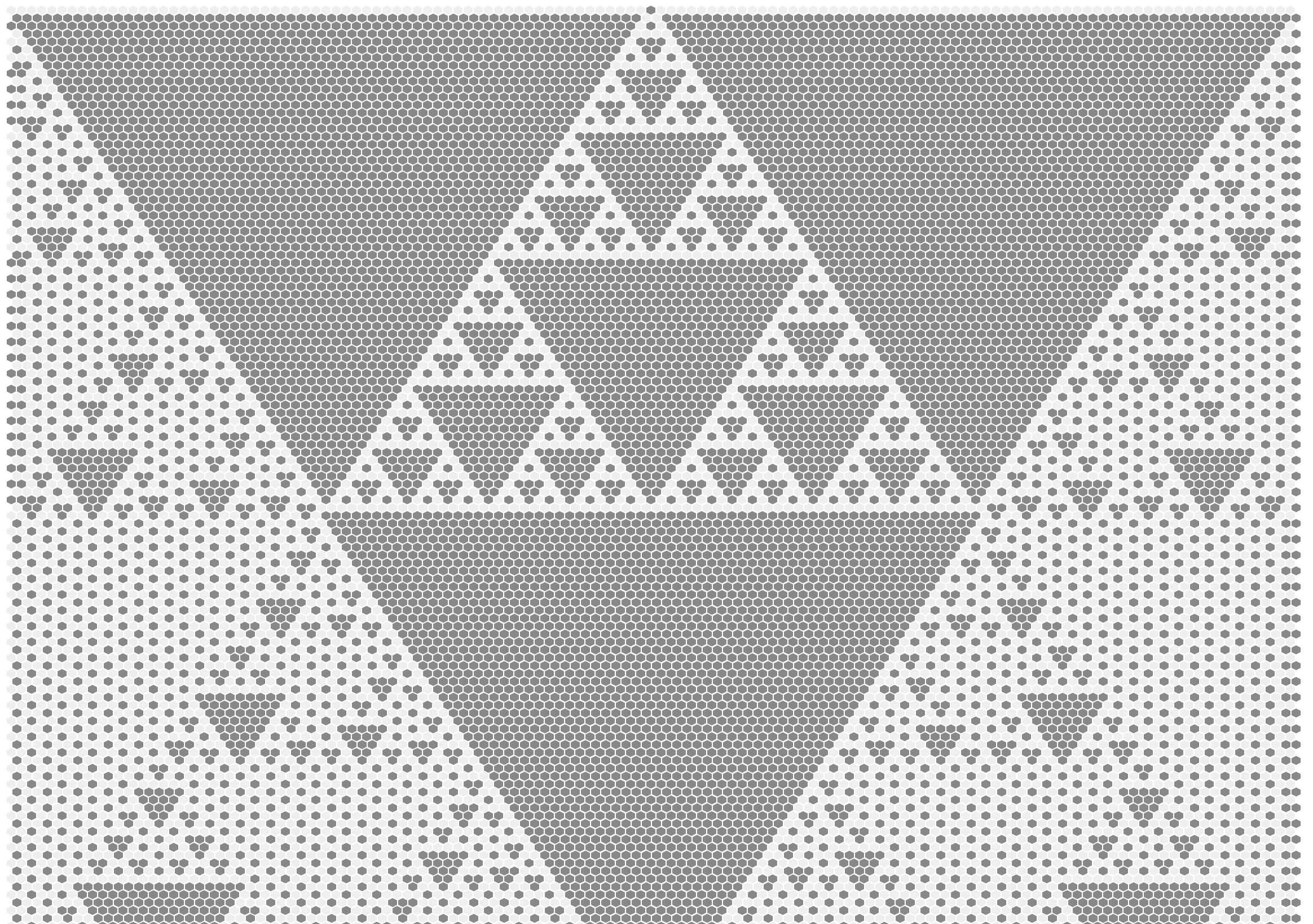[...] an elementary cellular automaton is a one-dimensional cellular automaton where there are two possible states (labeled 0 and 1) and the rule to determine the state of a cell in the next generation depends only on the current state of the cell and its two immediate neighbors. [1]
This is an easy tool for generating any of 256 one-dimensional cellular automaton on various tiling such as squares, hexagons, pentagons...
A Wolfram code is naming convention declared by Stephen Wolfram [3, 4] for elementary
cellular automaton rules. Given that each cell has 3 neighbours / ancestors, which can be in
two states 0 or 1. Therefore, total number of combination is 23 possible
ancestor patterns. For each pattern we define a result, e.g. for pattern 110 the new cell
state is 0.
| Pattern | 111 | 110 | 101 | 100 | 011 | 010 | 001 | 000 |
|---|---|---|---|---|---|---|---|---|
| New state | 0 | 0 | 0 | 1 | 1 | 1 | 1 | 0 |
The name of a rule is the number in binary given by new state for center cell, e.g. 000111102 = 30. See the live demo for Rule 30 and other rules on regular square grids.
Second step for more complex tilings, but simpler cellular automaton are hexagons. Each hexagon has 2 neighbours / ancestors, therefore, there are just 22 possible ancestor patterns.
| Pattern | 11 | 10 | 01 | 00 |
|---|---|---|---|---|
| New state | 1 | 0 | 0 | 1 |
Similar as in squares the name comes from the binary number given the new states, 10012 = 9, see Rule 9
Feel more that free to use, modify and copy the code, just follow the licence and cite it:
@misc{Kerekrety2020,
author = {Kerekrety, M},
title = {Elementary cellular automaton in Hexagonal, Pentagonal and Other Tessellations},
year = {2020},
publisher = {GitHub},
journal = {GitHub repository},
howpublished = {\url{https://github.com/matejker/elementary-cellular-automaton}}
}[1] Wikimedia (?), Elementary cellular automaton, https://en.wikipedia.org/wiki/Elementary_cellular_automaton
[2] Wolfram Research (?), Wolfram Atlas: Elementary Cellular Automata, http://atlas.wolfram.com/01/01/
[3] Stephen Wolfram (2002), A New Kind of Science, End of Line Clearance Book ISBN-10: 1579550258
[4] Stephen Wolfram (1983), Statistical mechanics of cellular automata, Reviews of Modern Physics, Volume 55, Issue 3, July 1983, pp.601-644

